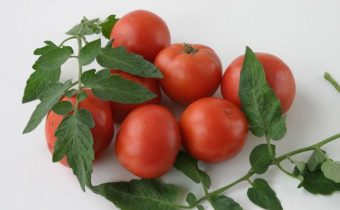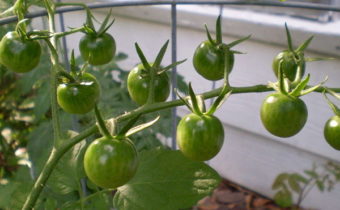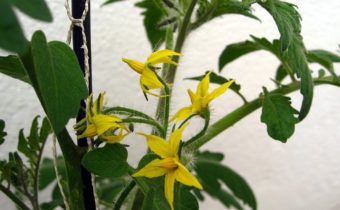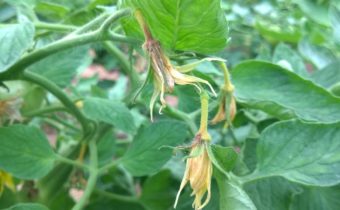Hollow Fruits Tomatoes
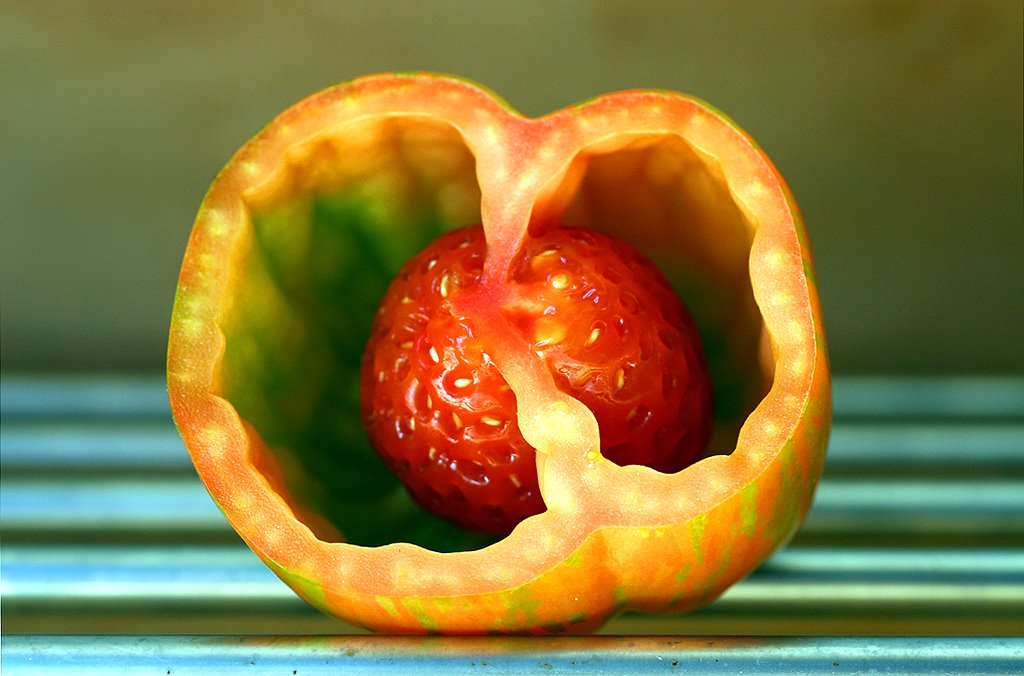
Sometimes, instead of beautiful pink-cheeked tomatoes, the gardener gets deformed, small or hollow tomatoes. Hollow fruits are those that inside have voids instead of juicy, tasty flesh. There are several reasons for the appearance of such tomatoes.
Symptoms
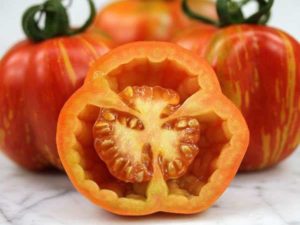
Recognize the hollow fruit can be immediately. First, defective tomatoes acquire non-standard shape for tomatoes, as well as size. They can be either too small or clumsy. Externally, individual tomatoes resemble sweet peppers - their surface is ribbed, and the shape is conical or cubic.
If you touch these vegetables, you can understand that their skin is very dense, hard. It is difficult to pierce with pressure. And if you cut it, the juice will not appear, because there is no pulp inside.
Why does tomato hollow occur?
Hollowness is a violation of the biological processes of vegetable growth. And if you dig deeper, then you can talk about emptiness even before the formation of fruits. It all depends on pollination: if it is bad, then the tomatoes will not be tied up with quality ones. This problem occurs for a variety of reasons.
Factors affecting pollination:
- Temperature. It is known that at elevated air temperatures (above 32 degrees) pollen becomes sterile. She can no longer fully fertilize female flowers. It is possible, of course, that some of the pollen will get to its intended purpose, but this amount will not be enough to form a healthy, weighty tomato.
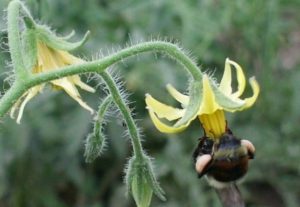
- Humidity. If the weather is too cold, when the degree drops below 13 degrees Celsius, and the humidity rises significantly, the pollen begins to stick together in lumps. She can not completely sleep from the anthers. Thus fertilization does not occur. In the extreme case, even if some of the pollen fell on the flowers, in their place an atypical shape of tomatoes without viscera, with underdeveloped seeds, will appear.
- Growing tomatoes in the greenhouse. Pollinating insects, which rarely visit the greenhouse to collect pollen, affect the pollination process. This is due to the fact that most of the doors and windows of the greenhouse are closed. Either the inside is too hot, which repels insects. If you grow bee-pollinated species, then pollination will not occur without bees. You can, of course, carry out the pollination procedure yourself, but still it’s better to do it than natural assistants; it will not work then, perhaps, fruit ovaries will form inferior.
- Lack of pollination. In the open ground, wind, precipitation, and bees freely transfer pollen from flower to flower — a natural fertilization process is underway. But in the greenhouse space to create suitable conditions for pollination can be difficult. The fruits, of course, can be tied up by parthenocarpy, but in this case, the beginnings of vegetables will appear after a very long time. They will be formed and mature for a long time. They will contain little sugars and acids, which will inevitably lead to hollowness, ugliness, seedlessness.
If not all the pollen is involved in the pollination process, then the fertilization process is abnormal. Fruits will form hollow, low seed. Such tomatoes ripen longer than usual, and spoil much faster.Their taste is also different - more often they are unsweetened, tasteless.
Prevent the appearance of barren flowers
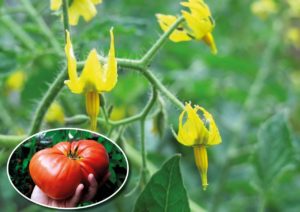
All preventive measures should be aimed at eliminating the causes of poor pollination of flowers. For this you need:
- try to keep a comfortable temperature for pollination. Tomatoes are well tied at 18-25 degrees;
- air humidity should not be higher than 70%;
- if tomatoes grow in a greenhouse, it must be constantly aired so that no air stagnation or condensation accumulate;
- during flowering in the greenhouse you need to install a fan so that the “wind” spreads the pollen through the flowers;
- lure insects pollinators to the site with the help of sweet baits;
- shake plant branches every morning for better pollination;
- in the first half of summer, apply fruit stimulants (Tomato, Ovary, Phytocarpine);
- during flowering, processing of tomato beds with boric acid.
Hollow varieties of tomatoes
The absolute number of summer residents are sure that the emptiness of tomatoes is a sign of marriage. However, not everyone knows that there are special varieties of tomatoes, for which the voids inside are common. They have a rough thick skin and pronounced ribbing. Inside, they are hollow, just like Bulgarian pepper. These varieties of tomato are grown for stuffing and cooking delicious salads. The color of the skin of such tomatoes is different: from light yellow to dark crimson. There are even striped species.
Famous Hollow tomato hybrids:
- Striped hollow is a tall mid-season variety of American origin. The skin is red with yellow longitudinal stripes. The variety is known as Striped Stuffer, Striped Cavern.
- Yellow Bell Pepper is a high-yielding variety with medium ripening periods. A lot of vegetables up to 200 grams. Ribbed fruits are colored bright orange. The Russian equivalent of an American is an illusion variety.
- Petty bourgeois filling - apparently weighty fruits resemble Bulgarian pepper. They are dark red in color. Have the shape of a truncated cone. Unpretentious durable variety. Ideal for the Russian climate.
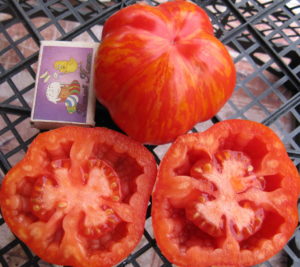
- Bulgaria is a hybrid with an early crop ripening. Tomatoes have a cuboid shape. Semi-hollow. The variety is characterized by prolonged abundant fruiting. In Russia, "Bulgaria" is known as the Crown.
- Figured - early indent. The color of the tomatoes is red. Slightly hollow. A variety of Ukrainian amateur breeding.
- Green pepper is a very tall variety. Tomatoes have a dark green color. The first harvest is not hollow.
Conclusion
To grow tomatoes full-fledged - hard work. This culture is demanding to the conditions of growth, and a slight change in any factor inevitably leads to the formation of low-quality fruits. Watch the air temperature and humidity, help pollinate tomatoes, feed them on time, water the plants, and then they will delight you with a rich harvest.


